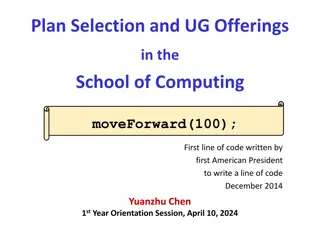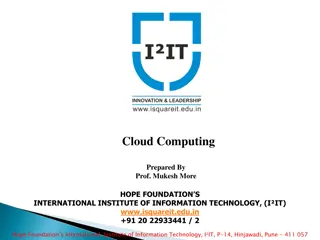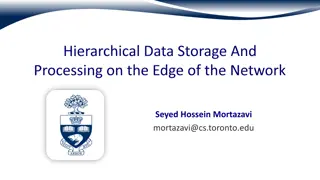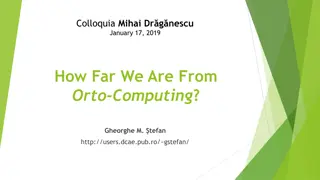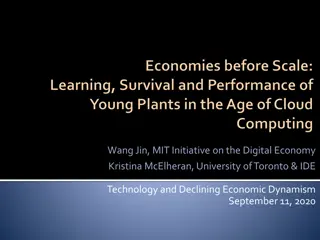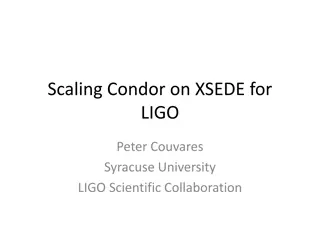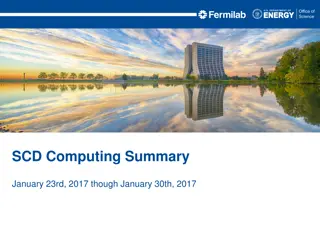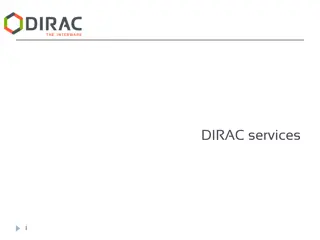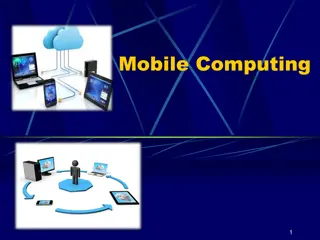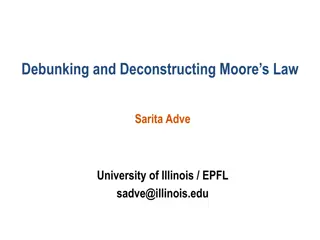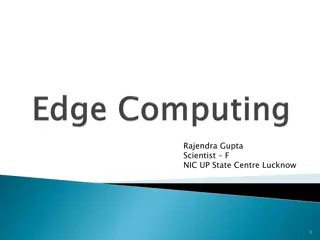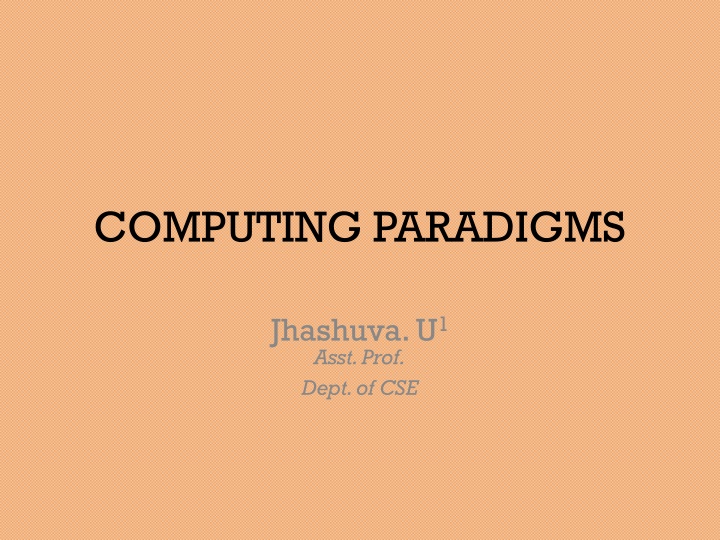
Computing Paradigms
Explore the concepts of centralized, parallel, and distributed computing paradigms in this comprehensive guide. Learn about the differences between these computing models and their applications in various systems and technologies.
Download Presentation

Please find below an Image/Link to download the presentation.
The content on the website is provided AS IS for your information and personal use only. It may not be sold, licensed, or shared on other websites without obtaining consent from the author. If you encounter any issues during the download, it is possible that the publisher has removed the file from their server.
You are allowed to download the files provided on this website for personal or commercial use, subject to the condition that they are used lawfully. All files are the property of their respective owners.
The content on the website is provided AS IS for your information and personal use only. It may not be sold, licensed, or shared on other websites without obtaining consent from the author.
E N D
Presentation Transcript
COMPUTING PARADIGMS Jhashuva. U1 Asst. Prof. Dept. of CSE
CONTENTS COMPUTING PARADIGMS Centralized Computing Parallel Computing Distributed Computing Ubiquitous Computing Utility Computing
INTRODUCTION The argued for many years about the precise definitions of centralized parallel computing, computing,and cloud computing. In general, distributed computing is the opposite of centralized computing. high-technology community has computing, distributed
CENTRALIZED COMPUTING This is a computing paradigm by which all computer resources are centralized in one physical system. (processors, memory, and storage) are fully shared and tightly coupled within one integrated OS. Many data centers and supercomputers systems, but they are used in parallel, distributed, and applications. All resources are centralized cloud computing
PARALLEL COMPUTING In parallel computing, all processors are either tightly coupled with centralized shared memory or loosely coupled with distributed memory. A computer system capable of parallel computing is commonly known as a parallel computer. Programs running in a parallel computer are called parallel programs.
PARALLEL COMPUTING The process of writing parallel programs is often referred programming. to as parallel
DISTRIBUTED COMPUTING A distributed system consists of multiple autonomous computers, each having its own private memory, communicating through a computer network. Information exchange in a distributed system is accomplished message passing. through
DISTRIBUTED COMPUTING A computer program that runs in a distributed system distributed program. The process of programs is referred to as distributed programming. is known as a writing distributed
UBIQUITOUS COMPUTING Ubiquitous computing with pervasive devices at any place and time using wired or wireless communication. computing refers to
UTILITY COMPUTING Utility computing, or The Computer Utility, is a service provisioning model in which a service makes computing infrastructure management available to the customer as needed, and charges them for specific usage rather than a flat rate. provider resources and
REFRENCES 1. Distributed and Cloud Computing : From Parallel Processing to the Internet of Things, 1.1.1.5 Computing distinctions by Kai Hwang, Geoffrey C. Fox,Jack J.Dongarra 2. https://en.wikipedia.org/wiki/Utility_c omputing paradigm

